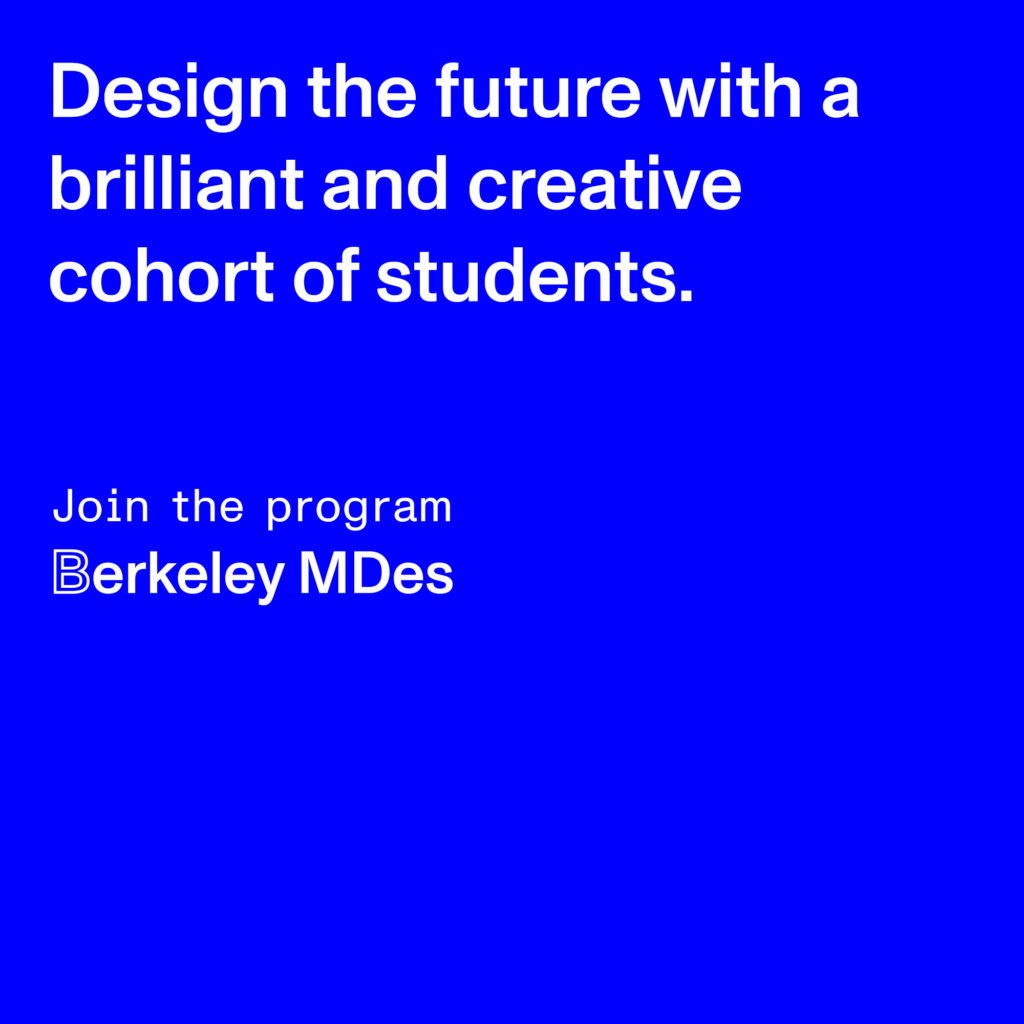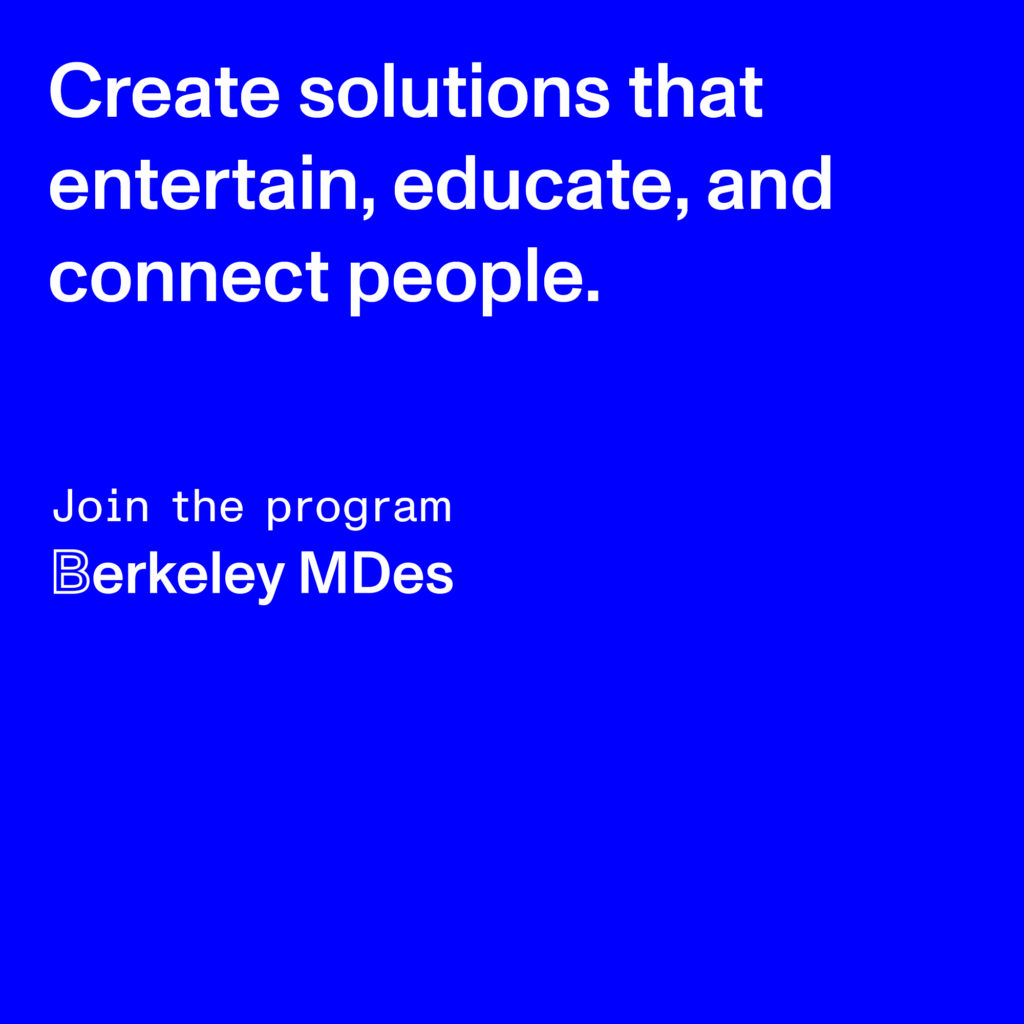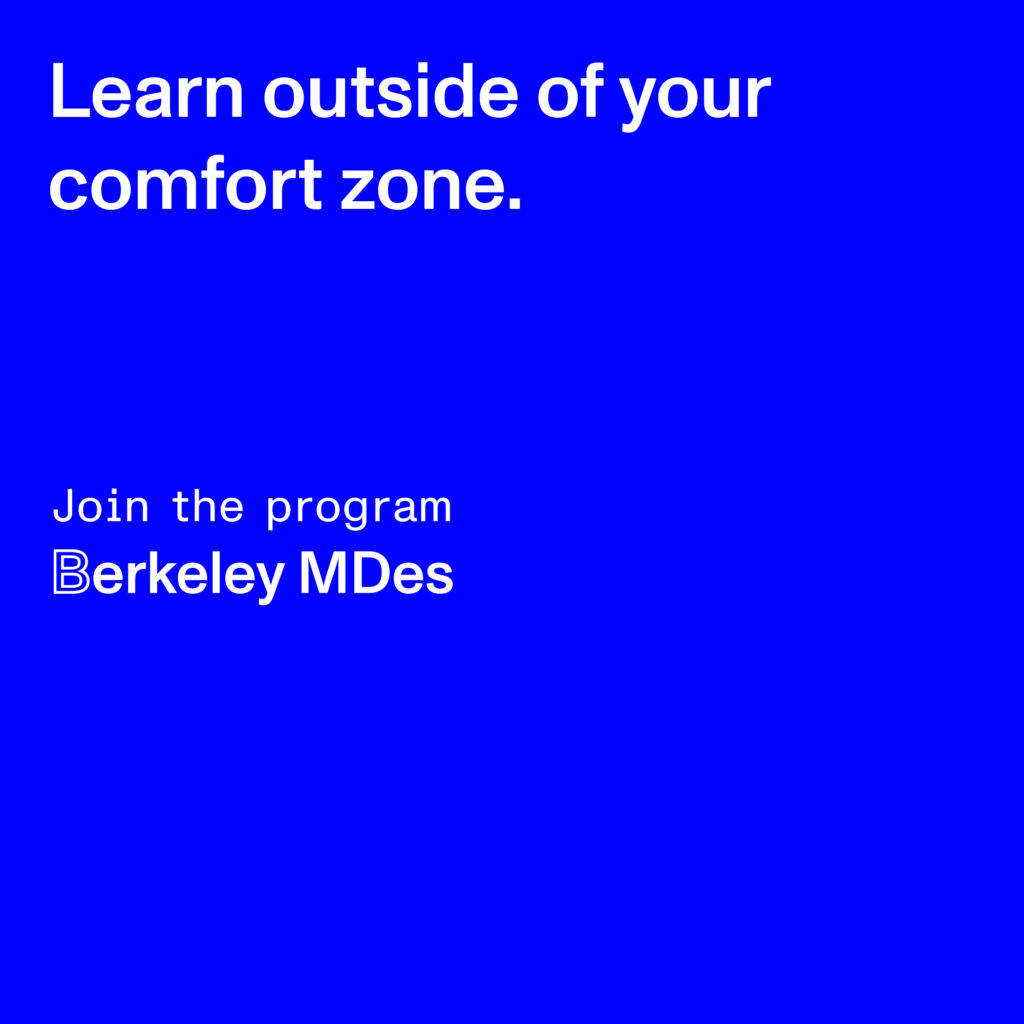Berkeley Master of Design
Berkeley’s studio-based professional Master’s program offers the mindset, skillset, and toolset to make emerging technologies matter.
Program Overview
The Berkeley MDes offers an immersive three semester curriculum that merges practice and theory. Our studio-based program connects emerging technologies, critical approaches to design, and impact on the most pressing social challenges. During your MDes studies, you will deepen your technical expertise and explore new areas of emerging technology taught by top Berkeley Engineering faculty. Simultaneously, in the College of Environmental Design, you will learn practices and methods for design as a tool for societal change among architects, landscape architects, and city planners.
The Berkeley MDes offers direct exposure to the San Francisco Bay Area’s design and technology sector as well as Silicon Valley’s culture of innovation, while remaining rooted in Berkeley’s history of thoughtful practice in the public interest. This program provides an unmatched opportunity to immerse yourself in a dedicated studio space and access to state-of-the-art fabrication lab where you’ll bring your ideas to life.
The Berkeley Brand
Leverage the renowned brand of UC Berkeley, the top public research university in the world, by pursuing the Berkeley MDes. Become part of the student, faculty, and alumni community who have become some of the modern world’s most innovative thought leaders and technical practitioners. Take advantage of the Berkeley ecosystem to launch an innovative career that helps tackle the world’s social, environmental and technological challenges.
Envision Yourself at Berkeley
The MDes is designed for early to mid-career professionals with an interest in pursuing graduate work at the intersections of design and technology. MDes students come from diverse academic and professional backgrounds, and are motivated by the opportunity to immerse themselves in a vibrant, creative, interdisciplinary, and impact-driven design community.
Strong applicants will be able to articulate their interest in design as a creative, goal-oriented activity that contributes to the emergence of innovative, socially impactful new technologies and environments. Possible areas of relevant prior experience include, but are not limited to, academic, professional, or personal work in technology, social or environmental policy, entrepreneurship, and/or community engagement. Strong applicants will also be able to articulate and demonstrate their interest in working with diverse communities and learning with individuals from different disciplinary/personal perspectives.
Because MDes students are expected to be capable of independently learning new technologies (e.g software tools and programming languages), and to quickly deploy technologies, tools, and skills in courses and projects, all applicants must have requisite technical preparation. Applicants without clear technical preparation from their academic or professional background should, at a minimum, develop intermediate programming experience prior to the start of the program, and have sufficient knowledge of some technical subject area at the level required to pass a technical elective.
Ready to get started?
Head to our Apply page to get an overview of application requirements and key dates, and learn more about the program through browsing the program website, attending admissions events, or speaking with MDes advisors and students.



